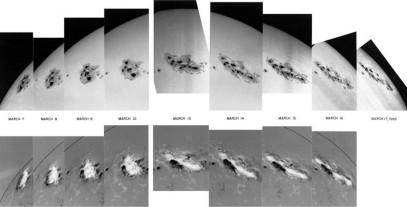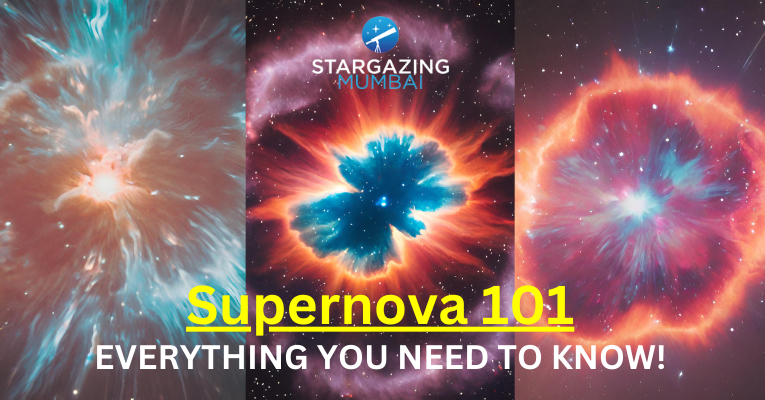Lately, a remarkable occurrence fascinated the people who were fortunate enough to see it under the night skies of Ladakh, India. Beautiful auroras illuminated the skies over Ladakh during the evening of May 2024, a spectacle that is unique in this area. The cause of this amazing occurrence was high solar flares, which are those intense outbursts of solar energy from our unpredictable sun.
These flares with intensities sometimes exceeding 10^6 Watts per square meter (W/m²) have the potential to produce stunning auroras as well as disruptions to communication systems. In this blog, we will discuss what solar flares are, how they happen, and how to prepare for them.
Historical Solar Flares
The Carrington Event of 1859

The Carrington Event, which took place on September 1-2, 1859, remains the most violent geomagnetic storm ever recorded. This event was named for astronomer Richard Carrington and involved a large coronal mass ejection (CME) that struck the Earth’s magnetosphere. It caused major disturbances in global telegraph systems, with sparks shooting from telegraph machines and operators receiving electric shocks. Brilliant auroras were spotted as far south as the Caribbean and Hawaii. The Carrington event emphasized the potential for massive disruptions in current technologies if a similar catastrophe occurred today.
The Quebec Blackout of 1989
On March 13, 1989, a severe geomagnetic storm generated by a CME struck Earth, resulting in The Great Québec Blackout. The storm caused electric currents on the Earth’s surface, causing the Hydro-Québec power grid to fail and leaving six million people without power for nine hours.

Credit: Space weather archive
The blackout impacted homes, businesses, and key services, resulting in considerable economic losses. Satellites reported abnormalities owing to higher radiation, and auroras were visible as far south as Texas and Florida. This event highlights the importance of being prepared for the effects of solar flares on modern infrastructure.
What are Solar Flares?
Strong radiation flashes known as solar flares are caused by the release of magnetic energy linked to sunspots. These powerful explosions can linger for minutes or even hours and take place in the sun’s atmosphere. Based on their X-ray brightness, solar flares are classified A, B, C, M, and X, with the X-class flares being the strongest.

Credit: cokada via Getty Images
Types of Solar Flares
A-class flares:
Intensity is less than 10^-7 W/m².
Impact: The weakest flares, which are typically undetected from Earth. They have little impact on our planet’s space weather systems. These flares are frequently used as a benchmark to assess more extreme solar activity.
B-class flares:
Intensity is between 10^-7 and 10^-6 W/m².
influence: Minor flares have little noticeable influence on Earth. They are slightly stronger than A-Class flare but have little impact on the Earth’s magnetosphere and technological systems. These flares may be observed by sensitive detectors but do not cause severe disruptions.
C-class flares:
Intensity is between 10^-6 and 10^-5 W/m².
Small flares can create brief radio blackouts near the poles, as well as modest radiation storms. These flares can impair high-frequency radio communications in polar regions and modestly raise radiation levels, potentially affecting satellites and astronauts in low Earth orbit.
M-class flares:
Intensity is between 10^-5 and 10^-4 W/m².
Impact: Medium-sized flares can produce brief radio blackouts in polar regions, as well as modest radiation storms that could threaten astronauts. These flares can impact the ionosphere, disrupting radio communications, and represent a moderate risk to satellites and astronauts because of high radiation levels.
X-class flares:
Intensity: More than 10^-4 W/m²
Impact: The most powerful flares, capable of producing widespread radio blackouts and prolonged radiation storms. X-Class flares can cause major disturbances in the Earth’s magnetosphere, resulting in severe geomagnetic storms. They can cause currents in electrical lines, potentially resulting in blackouts, and pose major radiation risks to satellites, astronauts, and high-altitude flights. These flares also cause beautiful auroras observable at lower latitudes.

Bottom- Description of solar flare classes where the definition of the flare classes is based upon their peak flux in X-rays of 1-8 Å.
Credit: NASA/SDO.
The sun is a dynamic star with an ever-changing magnetic field. The movement of plasma on the surface twists and distorts the magnetic field. When the magnetic field lines become sufficiently twisted, they can shatter and reconnect, releasing enormous amounts of energy in the form of a solar flare. The process is known as magnetic reconnection.
The Science Behind Solar Flares
The sun’s magnetic field is extremely active and intricate. It is crucial for the generation of these flares. The sun’s magnetic field lines twist and tangle as plasma moves within the sun. These twisted magnetic field lines store enormous amounts of energy.
Magnetic reconnection occurs when magnetic field lines get too twisted, causing them to shatter and reconnect. This process produces a great amount of energy, which heats the solar environment and drives particles. The consequence is a burst of electromagnetic radiation ranging from radio waves to gamma rays.

Credit: Nasa SVS
During a solar flare, the energy contained in the twisted magnetic field lines is swiftly released. This energy heats the surrounding plasma to millions of degrees, causing it to radiate radiation throughout the electromagnetic spectrum. This radiation travels across space and can reach Earth, affecting the magnetosphere and technological systems.
Coronal mass ejections (CMEs), which are massive plasma and magnetic field expulsions from the sun’s corona, frequently occur in association with solar flares. Although solar flare and CMEs are distinct phenomena, they can coexist and aggravate Earth’s space weather conditions.
Impacts of Solar Flares
Solar Flares impact Earth in many ways such as:
Magnetosphere Effects: Solar flares can have a considerable impact on Earth’s magnetosphere. A solar flare’s release of energy and charged particles can cause geomagnetic storms by disrupting the Earth’s magnetic field. These storms can alter the Earth’s magnetic field, affecting compasses and other navigational devices.

Satellites and space technology: Solar flares’ high-energy particles can harm satellites, interfering with GPS and communication systems. Satellites in orbit may encounter higher drag as a result of the heated atmosphere, causing them to change orbit. This can disrupt anything from aviation to banking activities that require exact timing.
Astronaut Safety: Solar flare present a radiation risk to humans in orbit. Astronauts must take safeguards against radiation dangers while in space, particularly when traveling beyond low Earth orbit, such as to the Moon or Mars. Astronauts’ exposure to high quantities of radiation can raise their risk of developing cancer and other health disorders.
Power Grids and Communication Systems: Strong solar flare have the potential to cause power outages and damage electrical infrastructure. These induced currents can overload transformers and other components, causing widespread power outages. Solar flares can also impair communication systems, such as radio and satellite communications, affecting everything from emergency response to commercial flights.
Auroras: Solar flares can increase auroras, resulting in spectacular light displays in the polar regions. These natural light shows are created by charged particles from the sun interacting with the earth’s atmosphere. During times of high solar activity, auroras can be observed at lower latitudes than usual, creating breathtaking visual spectacles for onlookers.
Monitoring and Predicting Solar Flare
Scientists monitor solar activity with a variety of instruments such as telescopes and procedures to lessen the effects of solar flare. NASA’s SDO | Solar Dynamics Observatory and other satellites offer ongoing solar observations. Forecasting space weather and sending out alerts regarding possible solar flare activity are the responsibilities of organizations like the NOAA / NWS Space Weather Prediction Center.
Solar flare prediction is still an emerging field, but technological advancements and a greater understanding of the sun’s nature are helping us forecast these events more accurately. Scientists utilize computer models and simulations to forecast solar flare activity in response to present solar conditions. Early warning systems are essential for protecting sensitive equipment and assuring the safety of astronauts and satellites.
Early warning systems play an important role in minimizing the effects of solar flare. These technologies enable operators of satellites, electrical grids, and communication networks to take preventative actions by alerting them to possible solar flare activity. Early warnings can help protect astronauts’ safety by allowing them to seek shelter or postpone spacewalks during periods of intense solar activity.
Mitigation and Preparedness
A variety of procedures can be implemented to protect electronics and infrastructure against the effects of solar flare. Critical phases include designing radiation-resistant satellites, deploying power grid protection measures, and establishing early warning systems. These techniques serve to lessen the consequences of solar flare while also ensuring that important systems continue to operate.
Space missions are designed with solar flare activity in mind. When arranging spacewalks and other radiation-exposure activities, mission planners take into account the time of solar activity. Protective shielding on spacecraft and spacesuits can also aid in decreasing radiation exposure.
Governments and corporations have critical roles in planning for solar flare events which include:
- Invest in research and infrastructure enhancements to mitigate solar flare threats.
- Collaborate with government agencies, industrial stakeholders, and scientific organizations.
- Develop effective measures to minimize the hazards of solar flares
Education and public awareness are also essential in planning for solar flare incidents to:
- Alert the public about the potential effects of solar flares.
- Inform communities about precautions they can take to protect themselves.
- Clarify myths and misconceptions regarding solar flares through public awareness efforts.
The Future of Solar Flare Research

Credits: NASA/ESA
Solar flare research is still going strong, and new technological developments and global partnerships are improving our knowledge and forecasting skills. In order to improve our capacity to predict solar flares and lessen their impacts, projects like the Parker Solar Probe seek to obtain closer observations of the sun.
Advances in technology are improving our ability to monitor and forecast solar flare. Improved telescopes, satellites, and computer models enable more accurate and comprehensive observations of the sun. These developments are assisting scientists in developing better predictive models and early warning systems for solar flares.
International cooperation is critical in tackling the global effects of solar flares. NASA, NOAA, and the European Space Agency collaborate with other institutions around the world to share data, research, and solutions for decreasing solar flare danger. These alliances serve to ensure a coordinated reaction to solar flare incidents, which improves our overall preparation.
Solar flares show the sun’s dynamic and unpredictable character, emphasizing the importance of understanding these strong phenomena in order to protect our infrastructure and technology. By being educated and prepared, we can reduce the impact of solar flares while also enjoying their natural beauty, such as the spectacular auroras. Continued research, technological breakthroughs, and international cooperation are critical to improving our prediction skills and reaction plans. As we expand our knowledge and equipment, we can better protect ourselves from the effects of solar flares, assuring the resilience of our technological systems and the safety of space missions.
Liked this, consider reading:
7 Mind-Blowing Black holes Discoveries: Redefining the Dark Kings of the Cosmos
The Astonishing Summer Solstice of June 2024! – Stargazing Mumbai



